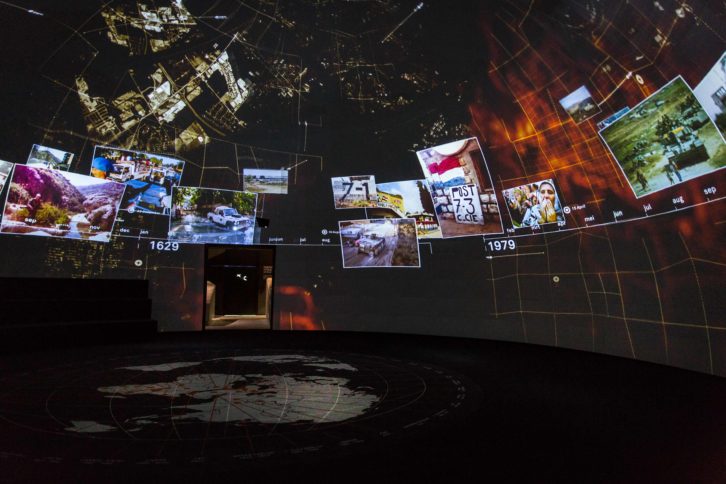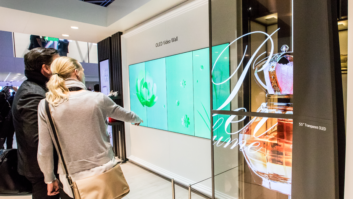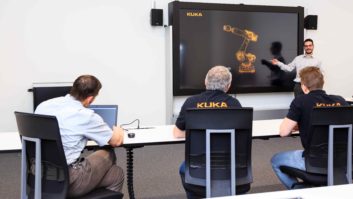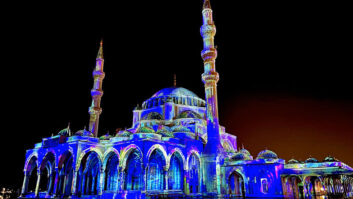
In the first part of this projection feature we revealed the resilience of the market in the face of some pretty challenging conditions. Here Ian McMurray looks at performance beyond what is shown on the spec sheet and how manufacturers are increasingly focusing on application-specific functionality.
“Noise from traditional projectors is intrusive and distracts from the content displayed on the screen,” believes Gerd Kaiser, senior product manager projectors at NEC Display Solutions Europe. “At ISE 2019, NEC launched the P525UL which, at just 22dB, is virtually silent in operation. This was a huge step forward in innovative projection technology: more than a slight tweak to image quality, this development offers real benefits to the user in terms of the overall experience.” NEC has since introduced the P605UL, which contrives to be not only 1,000 lumens brighter – but also 3dB quieter. Kaiser’s reference to “the overall experience” is, perhaps, key. There is much more to owning and using a projector than simply admiring the bright, incredibly detailed, high fidelity images on the screen.
“For the most part, the core technology benefits of projectors appear to be very similar,” says Colin Boyle, who is European projector specialist at Canon, “but this is driving vendors to focus on other benefits, such as ease of integration, simpler setup features, as well as support tools to enable automation or enhanced management. These sorts of functionalities create a competitive advantage with system integrators, who are looking for models that enable easy installation, especially in creative and complex environments.”
Myriad models
He has an ally in Thomas Vertommen, European product manager for projectors at Panasonic Visual System Solutions. “At first glance, there are many manufacturers offering a myriad of different projector models and technologies that at a superficial level look much the same,” he remarks. “However, when you look beyond the spec sheet and examine the performance of these devices and their different technologies in a variety of customer scenarios, the performance varies massively. Performance, installation environment, maintenance, technology choice and management requirements are just a small sample of the things that can impact the right choice for a customer solution.”
Julia Lin, EMEA product marketing manager at Vivitek, makes an important point about an industry that has long focused on key specification parameters – resolution, brightness, contrast ratio and so on. How do you tell one 5,000 lumen WUXGA resolution projector from another?
“The difference between projectors seems to be indistinguishable when viewed from an on-paper perspective,” she says. “This is because the traditional way of listing specifications is not enough for users to ‘see’ the differences, which don’t really stand out on a spec table. Also, hardware specs don’t always tell the whole story about a projector, nor give much of an insight into its performance. The ‘invisible’ part that drives the hardware’s performance – such as its mechanical design, its cooling efficiency, the manufacturer’s R&D competence, its durability and so on – are not easily reflected on a spec sheet.”
Lin concludes that manufacturers need to do a better job of articulating their unique selling points. With too many continuing to believe that it’s SSI – “20,000-hour lifetime!” they explain breathlessly, and in unison – that makes them different, it’s a salutary reminder.
“If projectors can serve the needs of a specific application at an appropriate market price, they will see success”
Gerd Kaiser, NEC Display Solutions Europe
Application-specific
The devil is increasingly in the detail. That was one of the fascinating things about this year’s InfoComm – how manufacturers were increasingly focusing, not on the traditional brightness/resolution/size axis, but on what might be called ‘application-specific’ functionality. One featured an operating system designed for education environments; another included presets to automatically adjust output according to location; yet another was controllable via an app; and a fourth, remarkably, looked just like a spotlight.
“Being successful in niche segments requires expertise and deep knowledge of projection technologies – something Barco has in abundance,” claims Ignace Rombaut, vice president of projection at Barco. “Along with our traditional large venue projection portfolio, we’ve always been active in tailoring projectors for niche segments, bringing very specific features and capabilities.”
“This isn’t necessarily a new trend,” he adds, “but rather a continuation of what we’ve been doing for a long time already.”
One of the better examples of an application-specific projector is NEC’s PX series. “If projectors can serve the needs of a specific application at an appropriate market price, they will see success,” says Kaiser. “This allows differentiation and the successful penetration of niche markets. For example, NEC PX Series projectors are perfectly suited for digital signage applications – the media player is directly inserted into the projector; its footprint remains the same, there is no additional fixing or connectivity requirement, nor an external content source.”
Too big, too heavy
Also on show at InfoComm was a very interesting innovation from Digital Projection. “It’s a solution for those who – perhaps rightly – believe high brightness projectors are too big and too heavy, with all the challenges and cost that can involve,” says Mark Wadsworth VP of global marketing at Digital Projection. “The Satellite Modular Laser System is a projection system that breaks down a projector into simple building blocks by separating the projection head from the big, heavy light source. This allows installers to have access to very bright projectors in a chassis in a size similar to a large shoebox. The light source can be situated up to 100 metres away in the server rooms – which also removes the large majority of the heat and noise from the space the head is installed in.”
Technology innovation continues to be a strength – and a ‘must do’ – for the industry. “Despite the rise of flat panels, Epson continues to enjoy considerable success in projectors because users still demand large displays at cost-effective prices,” says Epson’s Dummer, “and we expect that success to continue as we bring new technologies to market. Apart from high brightness, we’re also utilising pixel shift technology, where the panel LCD doesn’t necessarily need to have high native resolution in order to deliver HD or UltraHD/4K images on-screen. We’re also enabling embedded PCs and Wi-Fi and Miracast in our new range, facilitating usability and connectivity.”
But, as Boyle points out, that innovation must always be focused on what customers want. “Looking at the specific sector needs and finding a solution to a problem they have is certainly a good way forward,” he believes. “From a Canon perspective, we’re certainly finding success in the creative installation market, which demands greater flexibility of installation, by providing a broader range of options in lens technology and chassis size. To do this successfully, R&D needs to be a priority for manufacturers in order to keep up with the changing projection environment and customer needs.”
www.barco.com
www.canon-europe.com
www.digitalprojection.com
www.nec-display-solutions.com
www.panasonic.net
www.vivitek.eu







